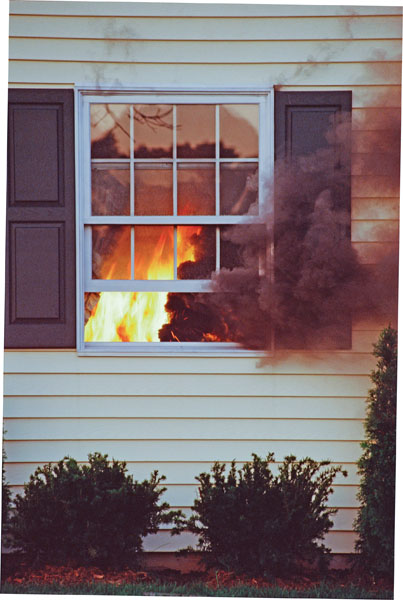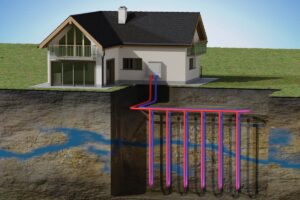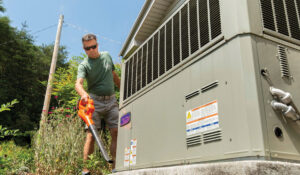National Fire Awareness week took place recently, and I am fairly certain that it was so designated because it was the beginning of the heating season. They gave several safety tips, which included having the gas furnace checked by a qualified person, checking or installing a smoke detector and installing a carbon monoxide detector. And let me make it clear that I agree with their suggestions.
As I thought about these very important, perhaps even life saving, suggestions for a few moments, I was happy to realize that only one of these suggestions was applicable to our house and to the house of our grandchildren. That item is a smoke detector, and in my opinion, every house should have at least one. However, we do not need a carbon monoxide detector or a furnace inspection because there are no natural gas appliances in either house. The more I thought about it, the more I felt I should explain to you why we have not suggested installing any gas appliances in any house for the last 25 years.
As I have written in an earlier issue of this magazine, my introduction to energy efficiency was in the 1970s while I was working for an agency of the federal government that provided funds to build houses for moderate-income families.
For several years, those funds were used for single-family houses only. Some of those houses were heated with natural gas, some with propane, some with electricity and a few with wood. It is hard for me to believe this now, but most of those early houses had little, if any, insulation. Later, President Jimmy Carter challenged America to conserve energy and make houses more energy efficient. As the state architect for the agency responsible for loaning millions of dollars to provide new houses for families in Arkansas, I started trying to learn everything I could about energy efficiency. I quickly learned that you can’t believe everything that you hear about that subject. Well, I was determined to do what was best for the future homeowner, but I seemed to have opposition just about every time that I suggested a change. There were times when I was very discouraged and wondered if it was worth the fight.
About this same time, we were notified that we would also be receiving funds to provide multifamily housing. As an architect, that was really good news to me. This program grew really fast, almost too fast in fact.
To help with the program, my boss appointed Julius Baird, an engineer, as the multifamily housing coordinator. Almost immediately after his appointment, Julius called me to his office. He told me that he wanted to have the best program in the country and he would support me in making our program the leader using energy efficiency. I told him that this was music to my ears. Then he said that he wanted all of the apartment units to be all-electric.
“Do what?” I said. And he told me an all-electric unit would be safer and more efficient than if gas was used.
I had no idea if he was right, but I knew he was serious. After months of working together, I was convinced he was correct. And this was a long time before we had the diagnostic tools we have today, which also will prove that he was right. Not everyone agreed with us, but we controlled the funds, so we funded only all-electric units.
One developer who had already built 20 units acquired adjacent land and built eight more identical units. But he was convinced that using gas for cooking, water heating and heating would be cheaper for the tenant. So, without our approval, he installed gas appliances in those eight units. We could have forced the developer to change the units to all electric, but we decided that this would be a great test of our opinion.
Two years later, that developer showed us the utility bills for all 28 units. All eight of the gas units had considerably higher average utility bills than the all-electric units. Julius was right again.
In the years since, I have had many other similar stories, but let’s get back to the safety issue. I do not believe that all houses that have gas appliances are unsafe. However, based on many years of experience, the potential for problems is significantly higher if the house has gas appliances.

Doug Rye can be heard on several different Illinois radio stations. You can go to Doug Rye’s Web site at www.dougrye.com, e-mail him at
info@philliprye.com, or call 501-653-7931.A typical all-electric house has no carbon monoxide problems. And an all-electric house has no combustion air requirements, and no appliance venting requirements where back drafting might occur.
Just one example is a gas water heater placed near a home’s return air which can cause potential health and safety issues. Testing shows that back drafting does occur when water is being heated at the same time the furnace is running. The return air is causing the gas flue to be under negative pressure and is sucking bad air, including carbon monoxide, into the duct system. The solution is to install an efficient electric water heater in place of the existing gas unit and seal the flue hole at the ceiling.
We hope this information will help someone avoid a similar safety threat. We want everyone to have a safe and Happy Thanksgiving. See you in December.








